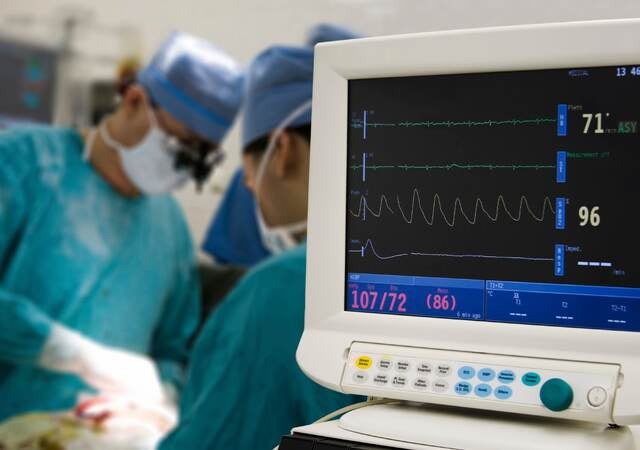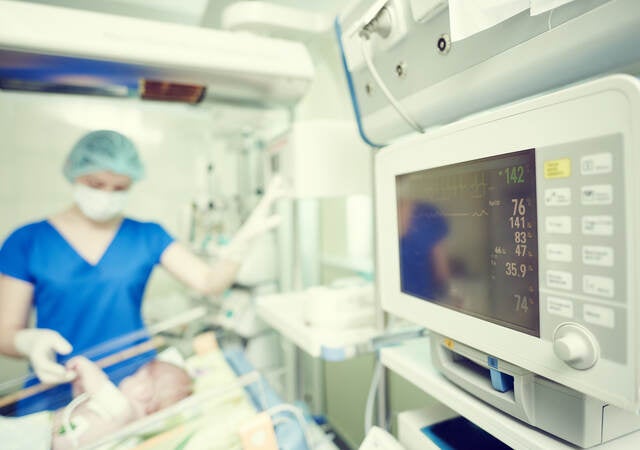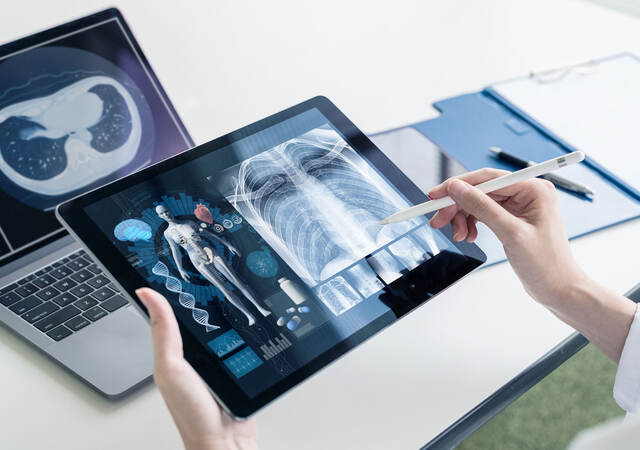February 24, 2023
By Sarah Fitzgerald
The US Food and Drug Administration (FDA) Center for Devices and Radiological Health (CDRH) recently released their 2022 Annual Report highlighting some of their achievements over the last year and looking ahead. This is a summary of some of the main points only, and does not include all details provided in the report.
As a bit of background, FDA CDRH oversees over 6,700 medical device product categories and about 27,000 facilities related to the production of medical devices throughout the world, approximately half in the US and half outside the US. In 2021, the FDA total budget was US$6.1 billion, of which 10.4%, or about $634 million, went to CDRH; 35% of this total was from user fees, which include annual establishment registration fees and fees paid for the FDA to review a submission in order to bring a device to market. CDRH has 2,011 staff members.
In this overview, CDRH highlighted some of the manners in which they have been fulfilling their dual missions which can be summarized as:
- Protecting the public health by ensuring the safety, effectiveness, and security of medical devices and products that emit radiation; and
- Helping speed innovations for medical devices.
Protecting the Public Health
FDA protects the public health in two primary manners: pre-market requirements and post-market requirements. CDRH highlighted both sorts of protection in their 2022 annual report.
Pre-market activities include FDA review various kinds of submissions, including those to ensure alignment with the FDA (including Q-submissions, 513(g) requests, investigational device exemptions [IDEs], etc.) and submissions to allow a company to start marketing a device (510(k)s, premarket applications [PMAs], etc.). By reviewing these applications before allowing devices to be sold, CDRH helps ensure that the devices have been evaluated and tested in a manner to help ensure safety, effectiveness, performance and security of medical devices.
FDA noted that 18,800 submissions had been received in 2022, but did not state how many were reviewed. Emergo by UL is aware that FDA declined to review some submissions, such as emergency use authorizations (EUAs) related to devices intended for the COVID-19 public health emergency, where CDRH did not believe this pathway needed to continue to be used as shortages related to the pandemic generally eased. CDRH also did not state which types of submissions these were, other than highlighting those related to the agency’s Safer Technologies Program [STeP] and Breakthrough Device (BTD) designations. It is not clear from this report if other sorts of submissions, like petitions or Freedom of Information Act (FOIA) requests, are included or not, but we presume not.
Emergo by UL searched FDA marketing submission authorizations including 510(k) premarket notifications, PMAs and other market authorization routes for 2022 as a rough indication of likely percentages of submissions over the year. However, as search results show when a device was authorized rather than when the submission was made, and as denied submissions don’t show up on standard searches, this will not be exact.
In 2022, FDA authorized:
- 3,229 510(k)s
- 216 Emergency Use Authorizations (EUAs) related to COVID-19
- 6 EUAs related to Monkeypox / Mpox
- 23 De Novos
- 22 PMAs plus 2,126 PMA supplements
- 1 Humanitarian Device Exemption (HDE) plus 108 HDE supplements
In all, FDA authorized a total of 5,731 marketing submissions over the course of 2022.
The balance, about 13,000 submissions, would presumably consist primarily of applications such as Q-submissions, 513(g) requests and Investigational Device Exemptions (IDEs) submitted before full marketing authorization submissions , plus some marketing submissions that FDA either declined to review or reviewed but did not authorize.
Post-market activities include review of recall information, and FDA noted that this included 30 safety communications, 15 letters to health care providers and 66 Class I recall amplifications. The agency provides some details related to the Philips Respironics recall, which demonstrates some of the CDRH activity undertaken during a recall that may not be immediately obvious to the public.
Helping speed innovation
CDRH highlights how they are working to help speed innovation in a number of manners.
The division provided a brief overview of the Breakthrough Device (BTD) and Safer Technology Program (STeP) designations. These designations allow greater collaboration between FDA and the sponsor for devices that are reasonably likely to offer some sort of improvement related to safety and/or effectiveness over currently available devices. A BTD is for a device that is intended for a life-threatening or irreversibly debilitating disease or condition, while a STeP is for a device targeting a disease or condition that does not meet this qualification (i.e., a less severe disease or condition). A request for such a designation requires that there be some level of evidence to suggest the reasonable likelihood of this advantage, and companies often submit prior to completing validation and verification testing their device to be able to collaborate with FDA on what testing will adequately support their marketing submissions. Because of this, there is expected to be a delay of months or years between receiving such a designation and being able to bring the device to market.
CDRH notes that 135 devices were designated as BTDs in 2022, and 19 BTDs received marketing authorization. A total of 752 devices received BTD status starting in 2015 and, as of Q3 of 2022, 56 have received marketing authorization.
FDA further note that 84 devices that they consider innovative received marketing authorization in 2022, and spotlight a number of these devices in the report. These devices included a COVID-19 in vitro diagnostic (IVD) test that detects chemical compounds in breath samples; a device to generate nitric oxide gas to improve oxygenation in newborns with certain types of respiratory failure; and a device intended to cool the mouth during chemotherapy treatments to reduce the severity of oral mucositis.
This was the first year that devices could be designated as STeP, and over 30 were requested and 14 designations were granted. FDA does not note any marketing authorizations for these devices, and presumably there are none at this time.
“Other”
CDRH notes a number of additional activities that took place over 2022. We consider these activities primarily related to communication or other topics that do not directly pertain to safety or speeding market access, and therefore are discussing them in a separate section.
CDRH notes that they published or updated 57 guidance documents in 2022. These are intended to provide the FDA’s current thoughts on a topic to help ensure alignment and understanding between the FDA and industry. When we looked at the FDA database, we saw 53 listed as published in 2022, as summarized in the following table.
2022 CDRH guidance documents
|
Primary Topic |
# |
New / Updated |
Draft / Final |
|
Device Specific (mammography, ophthalmic, sutures, fracture fixation plates, facet screws, dental resins, glycemic control, radiologic imaging, morcellation containment, LASIK, contact care, hearing assistance, replacement reagents, monkeypox tests, Radiology display, computer-assisted radiology detection [2], clinical decision support software, combination products) |
19 |
New 3 Updated 16 |
Draft 3 Final 16 |
|
Clinical Testing |
5 |
New 3 Updated 2 |
Draft 3 Final 2 |
|
Software & Cybersecurity |
3 |
New 0 Updated 3 |
Draft 0 Final 3 |
|
Bench Testing: Other than Software & Cybersecurity (toxicity, electromagnetic compatibility, human factors / usability) |
3 |
New 2 Updated 1 |
Draft 2 Final 1 |
|
510(k)s |
4 |
New 0 Updated 4 |
Draft 0 Final 4 |
|
PMAs / HDEs |
4 |
New 0 Updated 4 |
Draft 0 Final 4 |
|
De Novos |
2 |
New 0 Updated 2 |
Draft 0 Final 2 |
|
513(g)s |
1 |
New 0 Updated 1 |
Draft 0 Final 1 |
|
Administrative (appeals, least burdensome principle, device definition) |
3 |
New 0 Updated 3 |
Draft 0 Final 3 |
|
Post-Market |
3 |
New 1 Updated 2 |
Draft 1 Final 2 |
|
Quality Management System & Inspections |
3 |
New 2 Updated 1 |
Draft 3 Final 0 |
|
Unique Device Identification |
1 |
New 0 Updated 1 |
Draft 0 Final 1 |
|
Breakthrough / STeP Devices |
1 |
New 1 Updated 0 |
Draft 1 Final 0 |
|
Shortages (discontinuance or interruption) |
1 |
New 1 Updated 0 |
Draft 1 Final 0 |
|
Total |
53 |
New 13 Updated 40 |
Draft 14 Final 39 |
For the first time, CDRH has received authority over the supply chain and device shortages in relationship to a public health emergency (PHE). The center noted that they dealt with 455 potential and actual shortages, and were able to help mitigate almost 350 of these in a variety of manners. CDRH notes that they now actively monitor shortages and provide a shortage list, and have built the CDRH Resilient Supply Chain Program (RSCP) for greater collaboration and communication related to shortages. CDRH asserts that they need greater authority and control over medical device shortages in general.
CDRH launched the CDRH Customer Collaboration Portal (CDRH Portal) to facilitate electronic submissions of premarket applications such as 510(k)s. This allows what CDRH calls nearly real-time submission status. Based on our experience with this portal, it does not seem substantially different from previous submission communication channels, but allows confirmation at any time to ensure that a communication has not been missed.
CDRH also highlights in this report that they are mandating that all 510(k)s will need to be submitted in their new electronic submission template for medical devices (eSTAR) starting October 1, 2023.
As required by executive order, CDRH is allowing some hearing aids, intended for mild to moderate hearing loss which is believed to affect nearly 30 million US adults, to be sold over-the-counter (OTC) without the need for physician involvement. This is similar to how some eyeglasses, such as reading glasses, are sold OTC without the need for physician involvement.
CDRH discusses various collaborations and research that they have funded throughout 2022.
Conclusion
FDA, and CDRH specifically, continue to work at fulfilling their primary dual mission of protecting the public health and helping to speed innovations for medical devices, as well as increasing communication and collaboration across a range of topics.
Sarah Fitzgerald is Senior Consultant, Quality and Regulatory Affairs and Program Manager, US Regulatory at Emergo by UL.
Request more information from our specialists
Thanks for your interest in our products and services. Let's collect some information so we can connect you with the right person.






